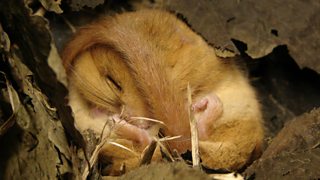Guest blogger: John Tucker, director of woodland creation, Woodland Trust
Woodland is one of our richest and most important wildlife habitats, providing a home for thousands of different species. Since the 1930s, half our and ancient have been lost, with many still threatened by development and disease.
One creature which relies on trees is our native . These cute creatures are easy to recognise with their furry tails and large black eyes, but are hard to spot as they are nocturnal and hibernate during winter. Their ideal habitat is native woodland, although they also live in scrub and hedgerows. In Victorian times, dormice were common but habitat loss means their numbers have declined. They're now found only in parts of Wales and southern England.

Dormouse on brambles by Hugh Clark
Planting trees is a great way to help support struggling species like dormice, creating new habitats and a more connected, healthy and thriving landscape. Depending on the site oak, rowan, birch, willow, alder, hawthorn, and beech are good for dormice but hazel is always a winner, as they love to eat hazelnuts!

Dormouse hibernating copyright Woodland Trust
Through its MOREwoods scheme, the offers support and funding to landowners who want to plant trees. Community groups, clubs and schools can also apply for free trees from the Trust to plant in their neighbourhoods.聽

Rowan saplings by Nick Spurling / WTPL
